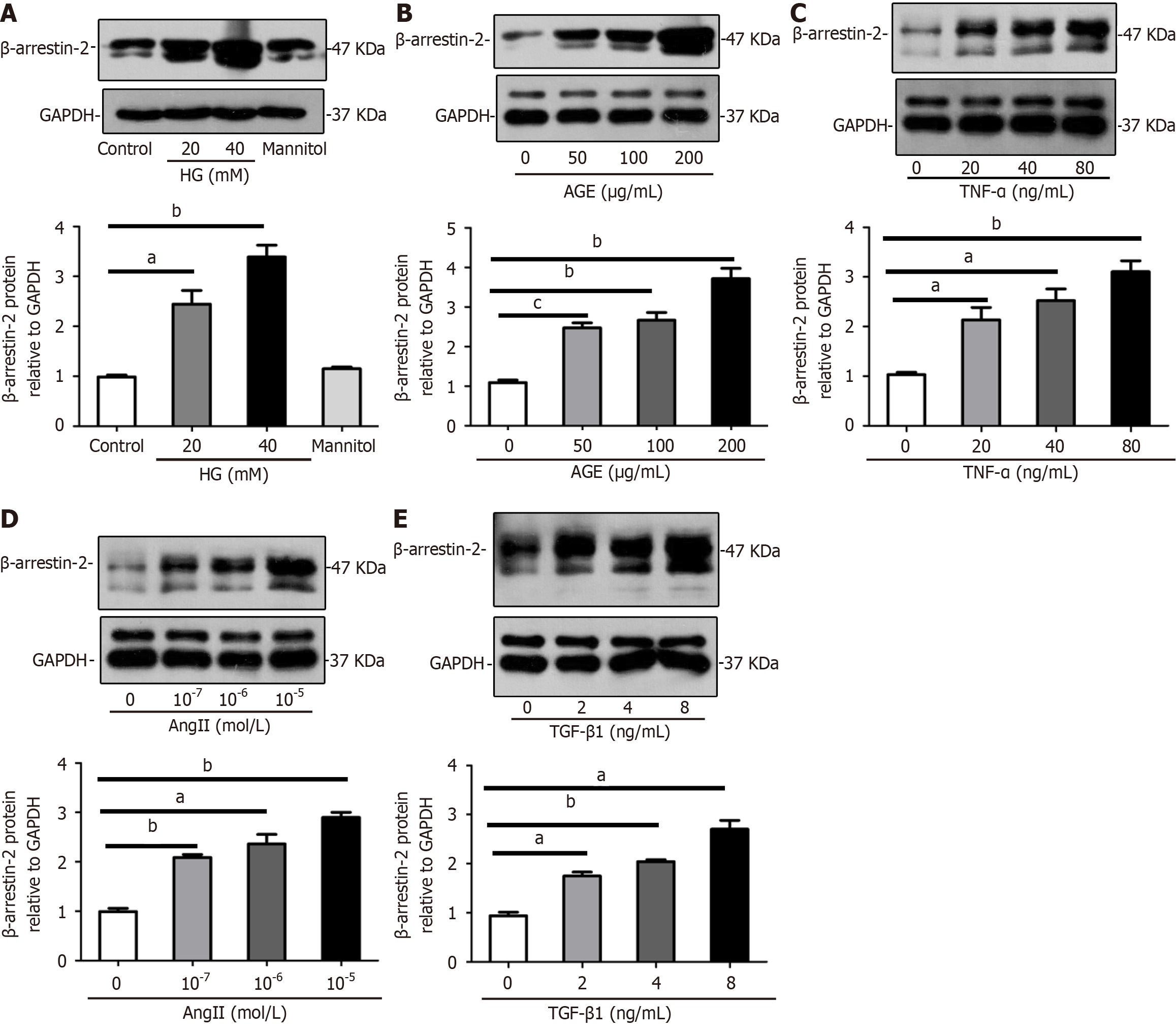Copyright
©The Author(s) 2024.
World J Diabetes. Dec 15, 2024; 15(12): 2322-2337
Published online Dec 15, 2024. doi: 10.4239/wjd.v15.i12.2322
Published online Dec 15, 2024. doi: 10.4239/wjd.v15.i12.2322
Figure 2 β-Arrestin-2 is upregulated in glomerular endothelial cells under high glucose levels and other stimuli in vitro.
A: Representative images and summarized data showing increased expression of β-arrestin-2 in glomerular endothelial cells (GENCs) with high glucose (HG) (concentrations of 20 and 40 mmol/L; 40 mmol/L mannitol was used as osmolarity control) stimulation for 24 h by Western blotting (aP < 0.05 vs control, bP < 0.01 vs control, n = 6); B: Representative images and summarized data showing upregulation of β-arrestin-2 in GENCs treated with advanced glycation end products (0, 50, 100, and 200 μg/mL) for 24 h by immunoblotting (bP < 0.01 vs control, cP < 0.001 vs control, n = 6); C: Representative images and summarized data showing increased expression of β-arrestin-2 in GENCs treated with tumor necrosis factor-α (0, 20, 40, and 80 ng/mL) for 24 h by Western blotting (aP < 0.05 vs control, bP < 0.01 vs control, n = 6); D: Representative images and summarized data showing increased β-arrestin-2 expression in angiotensin II (Ang II: 0, 10-7, 10-6, and 10-5 mol/L) treated GENCs for 24 h by immunoblotting (aP < 0.05 vs control, bP < 0.01 vs control, n = 6); E: Images and summarized data reflecting upregulation of β-arrestin-2 in GENCs treated with transforming growth factor-β1 (0, 2, 4, and 8 ng/mL) for 24 h by Western blotting (aP < 0.05 vs control, bP < 0.01 vs control, n = 6). TGF-β1: Transforming growth factor-β1; HG: High glucose; AGE: Advanced glycation end product; TNF-α: Tumor necrosis factor-α.
- Citation: Liu J, Song XY, Li XT, Yang M, Wang F, Han Y, Jiang Y, Lei YX, Jiang M, Zhang W, Tang DQ. β-Arrestin-2 enhances endoplasmic reticulum stress-induced glomerular endothelial cell injury by activating transcription factor 6 in diabetic nephropathy. World J Diabetes 2024; 15(12): 2322-2337
- URL: https://www.wjgnet.com/1948-9358/full/v15/i12/2322.htm
- DOI: https://dx.doi.org/10.4239/wjd.v15.i12.2322









